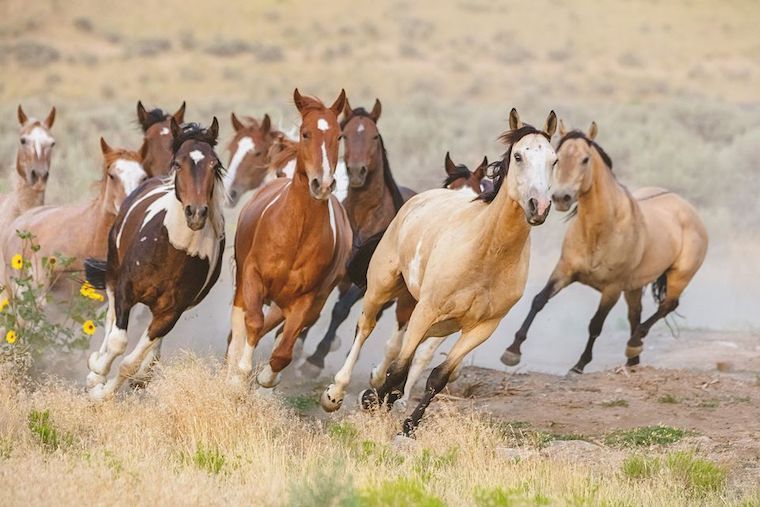
There are over 90,000 wild horses and burros in the United States of America, and right now, they’re at risk. In Trump’s Fiscal Year 2026 Budget, released on May 30th, it was revealed that the budget would slash Wild Horse Program Funding, eliminate the ban on slaughtering wild horses and burros and weaken transfer safeguards, enable cross-border slaughter, and implements the conservative Project 2025 plan to grant the Bureau of Land Management (BLM) the authority to “humanely dispose” of “excess” wild horses and burros (American Wild Horse Conservation, 2025).
There are currently 64,000 federally protected wild horses in government holding facilities. With a proposed budget cut to BLM’s program by 25%, this means that holding costs would make up most of the budget, leaving no room for humane-on-range management (American Wild Horse Conservation, 2025).
Not only this, but the provision prohibiting horse slaughter that is usually included in the president’s appropriations bill was omitted from Trump’s budget bill, meaning it will become easier for wild horses and burros to be sold off for slaughter (Nevada Current, 2025). Trump’s controversial and ultra-conservative Project 2025 suggests that these horses ‘[pose] an existential threat to public lands,’ while refusing to budget for humane solutions.
With the budget cuts combined with the threat of Project 2025 implementations comes the elimination of protections against slaughter. This includes opening the door for federally protected horses to be sold or transferred to kill buyers for export to slaughterhouses in Canada or Mexico, and would allow the federal government to hand wild horses over to outside agencies, who could sell them to kill buyers for a profit (American Wild Horse Conservation, 2025).
While there are arguments to be made about wild horses’ impact on the environment, there are better ways of dealing with the issue, such as fertility control efforts and restoring habitats.
‘Slaughter is a barbaric solution to a fundamentally broken federal program,’ said American Wild Horse Conservation (AWHC) executive director Suzanne Roy.
This issue is reminiscent of the brumby culling in Kosciuszko National Park in NSW in 2023. To reduce feral horse populations in the park, which had a tremendous effect on native wildlife, NSW Environment Minister Penny Sharpe authorised aerial shooting as a method for reducing the brumby population from over 17,000 to 3000 (ABC, 2024). Between November 2021 and July 2024, approximately 9,000 brumbies were removed from the national park, with 66% being culled by aerial shooting (ABC, 2024).
Animal activist groups, such as the Animal Justice Party (AJP), have suggested more humane alternatives to lethal control. The main one is fertility control in conjunction with rehoming, which AJP claims has been a successful method for over two decades.
Whether you see wild horses as pests or majestic creatures, there’s something to be said about their role alongside humanity. They are an integral part of many cultures and societies across the world, and we ought to treat them humanely and avoid unnecessary culling.
Sources:
American Wild Horse Conservation, What does the President’s FY26 Budget Mean for Wild Horses & Burros? (June 3, 2025).
Dana Gentry, Trump’s budget a ‘bullet to the head’ of America’s wild horses, say animal activists, Nevada Current (June 4, 2025).
Adriane Reardon & Isla Evans, Aerial culling of feral horses to continue in Kosciuszko NP as injunction fails (August 21, 2024)
Animal Justice Party, End Brumby Shooting!
Written by El Bancroft
Views: 12

